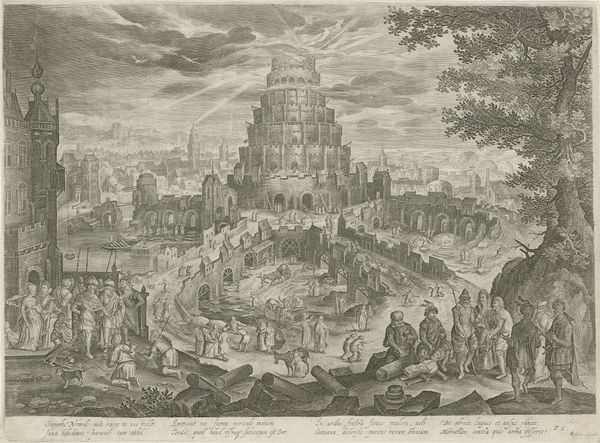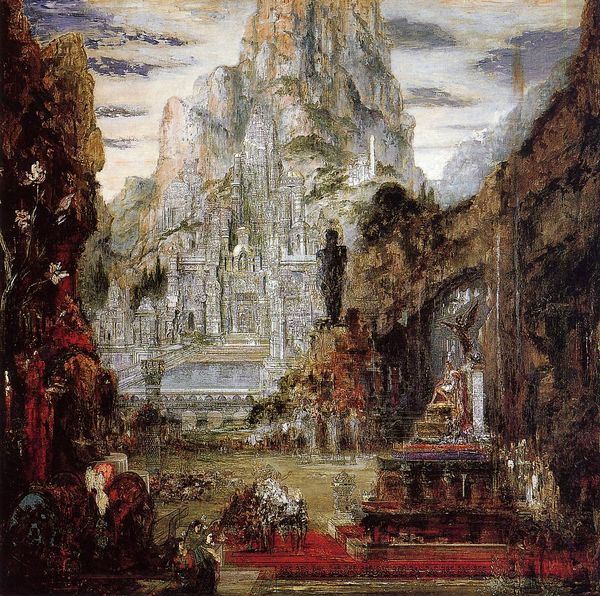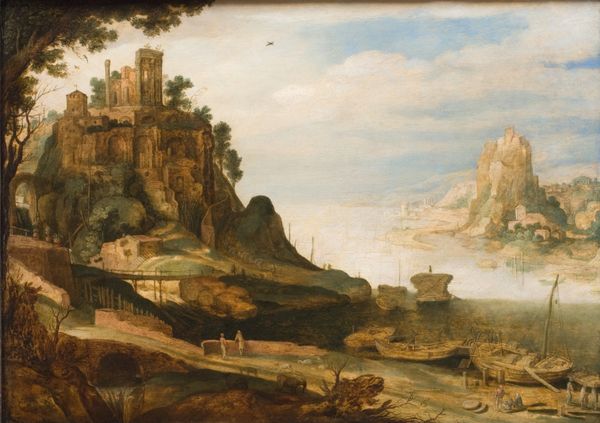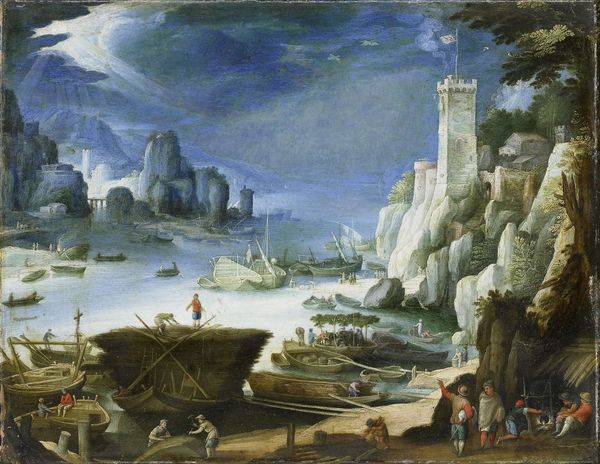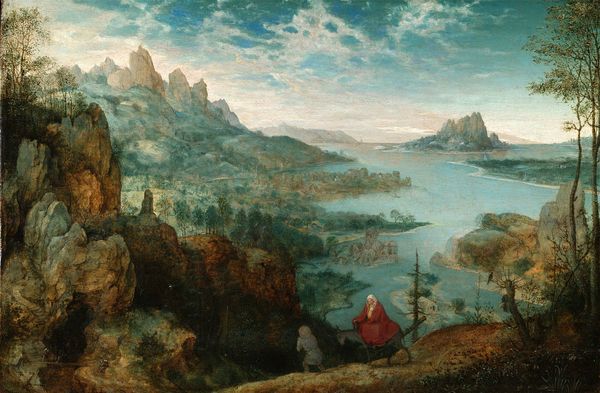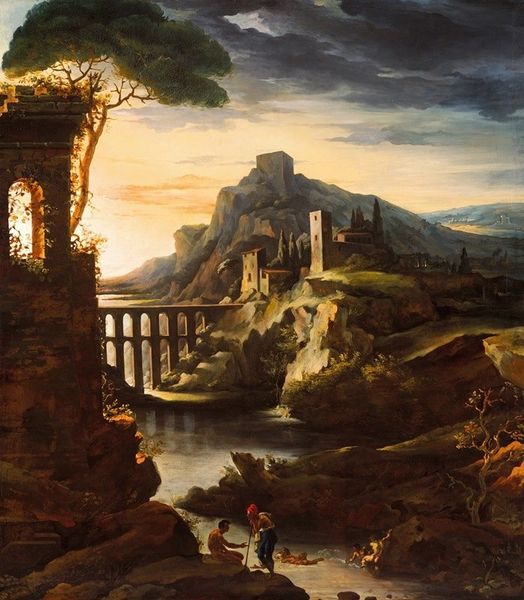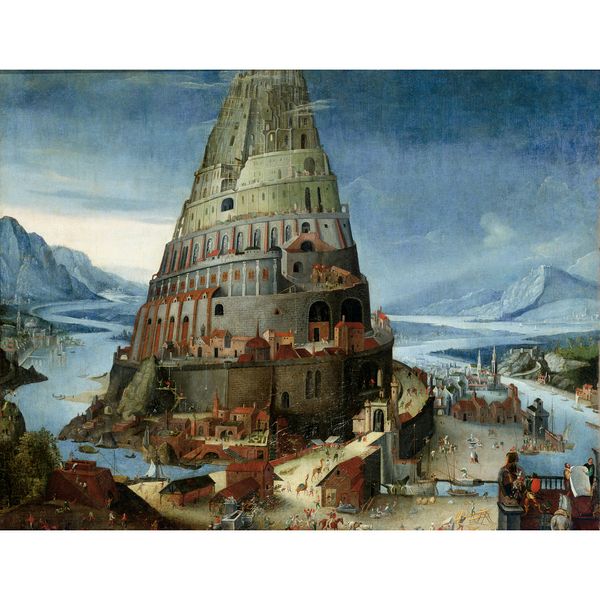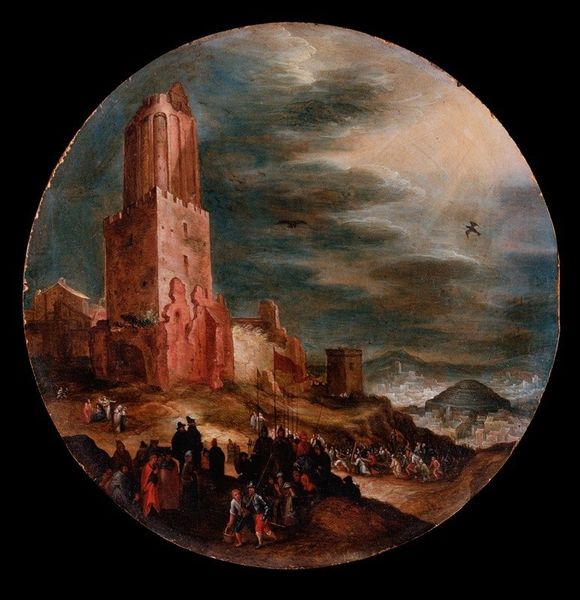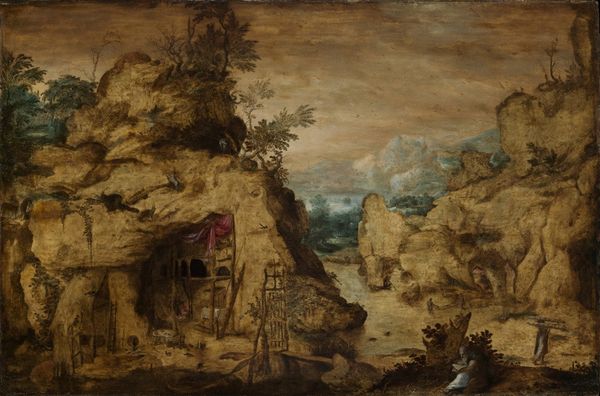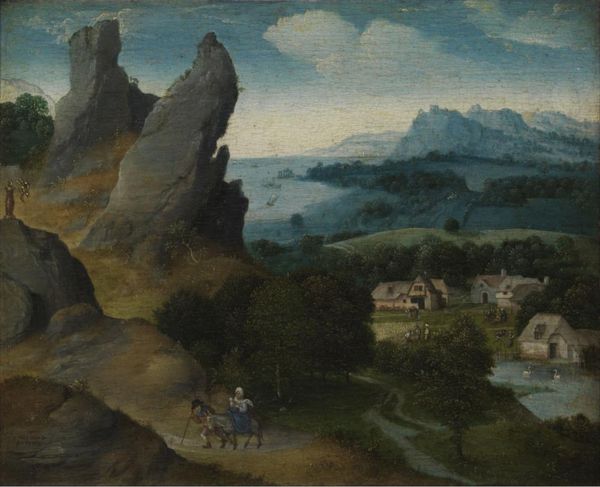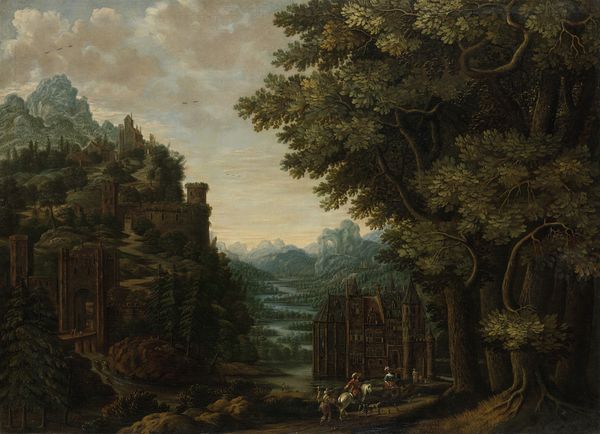
painting, oil-paint
#
painting
#
oil-paint
#
landscape
#
mannerism
#
oil painting
#
mythology
#
history-painting
Copyright: Public domain
Curator: We're looking at Tobias Verhaecht's "The Tower of Babel." It's an oil painting displayed here at the Royal Museum of Fine Arts Antwerp. Editor: My immediate impression is one of immense, almost oppressive, scale. The tower seems to loom over everything, dwarfing the landscape and the people below. There is also an oppressive feeling related to forced labor, like exploitation as the backdrop for hubris. Curator: Absolutely. Consider how Verhaecht utilizes the Mannerist style—the elongated forms, the somewhat distorted perspective. Look at how the tower spirals, almost aggressively, upward. Editor: And how that ambition—reaching for the heavens—mirrors historical and contemporary projects of nation-building, resource extraction, and capitalist accumulation. It speaks volumes about our relationship with natural resources and the impact on different groups of people and the world. Curator: Notice too the detail within the landscape—the delicate rendering of foliage and architectural details. The texture creates layers, and is not without structure and rigor, but also with fantasy. Editor: While there’s beauty in those details, it is easy to also see parallels to ongoing issues around inequality, the treatment of migrant workers and forced labor in building grand projects that benefit so few, with such detrimental effects to so many, including irreparable damage to the planet. The narrative continues. Curator: One might appreciate the play of light across the facade. How Verhaecht uses contrasts between the dark foreground and the bright sections near the upper section of the tower. This also demonstrates Mannerism through artifice rather than nature, an appeal to intellectual sophistication. Editor: It all seems a commentary on ambition taken to a dangerous extreme, an exercise of power divorced from its social and ethical responsibilities. It challenges us to think about labor exploitation, forced removal of Indigenous communities and disregard of land rights when pursuing building for the future. Curator: Ultimately, Verhaecht presents us with a structure where visual pleasure collides with questions of aspiration. Editor: Absolutely. It demands that we confront the complexities inherent in the choices we make collectively. The oil on canvas invites introspection in front of large scale hubris on full display.
Comments
No comments
Be the first to comment and join the conversation on the ultimate creative platform.

